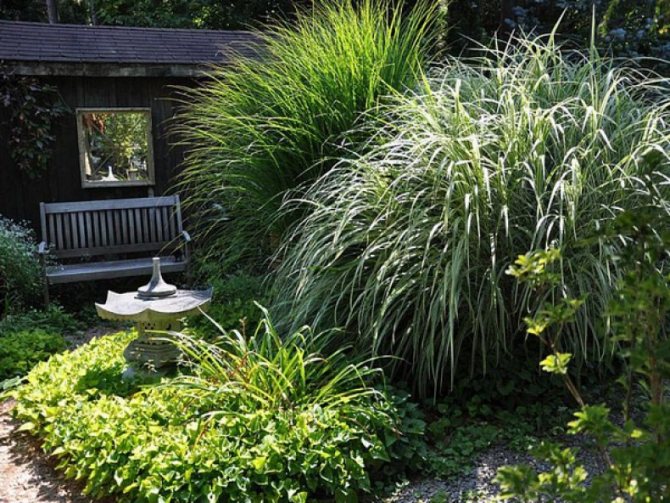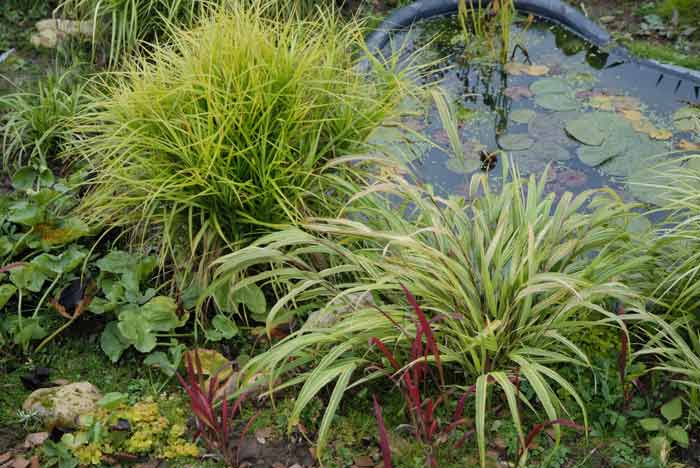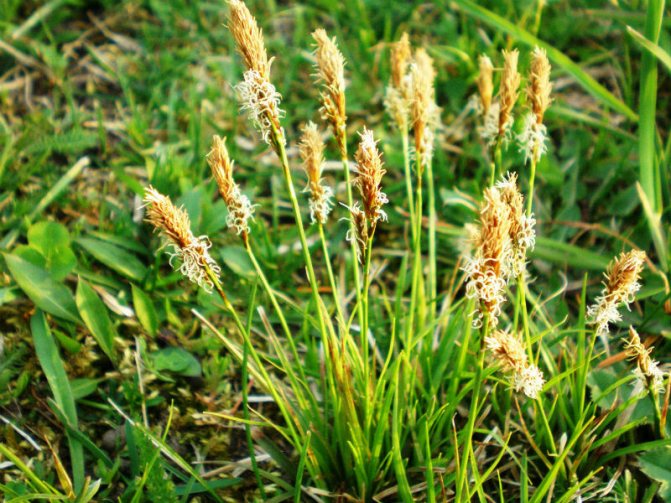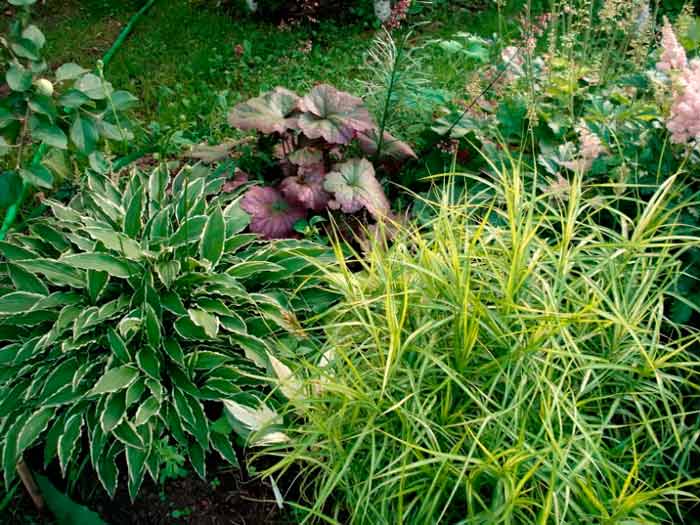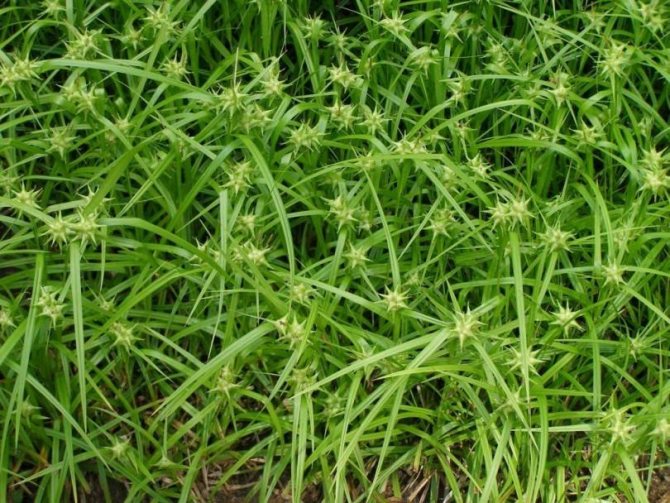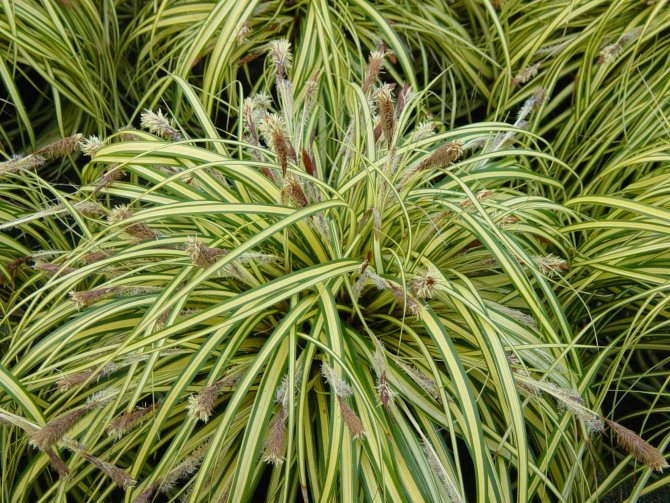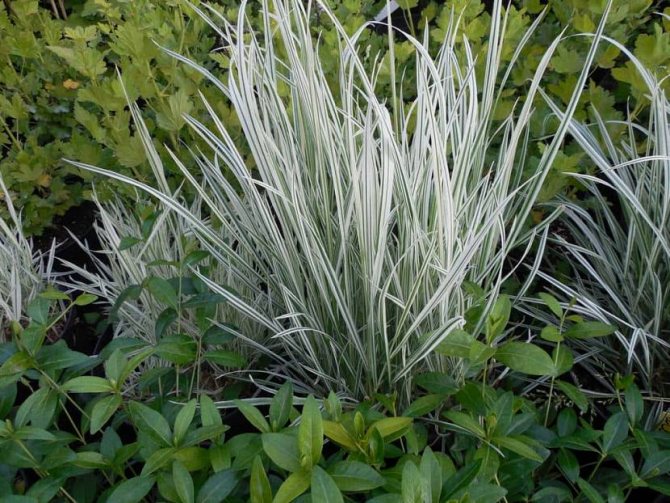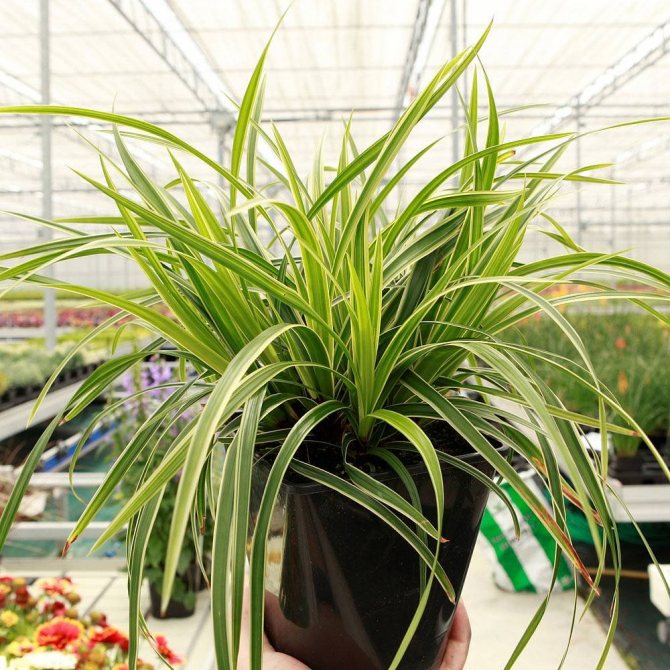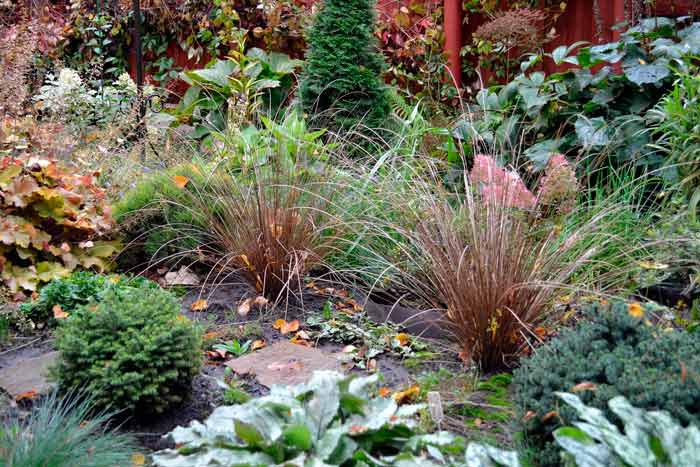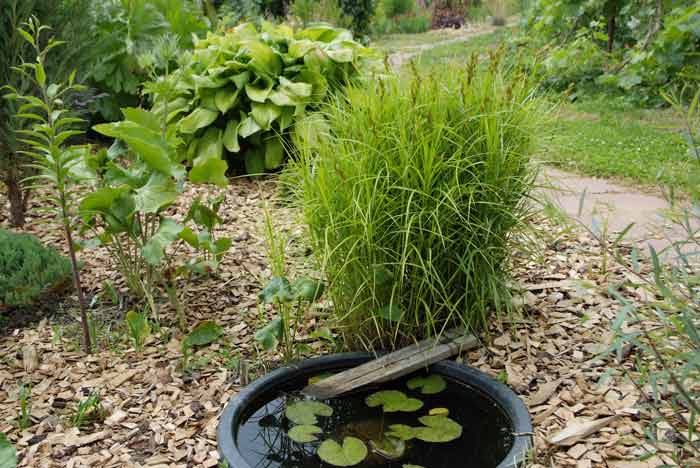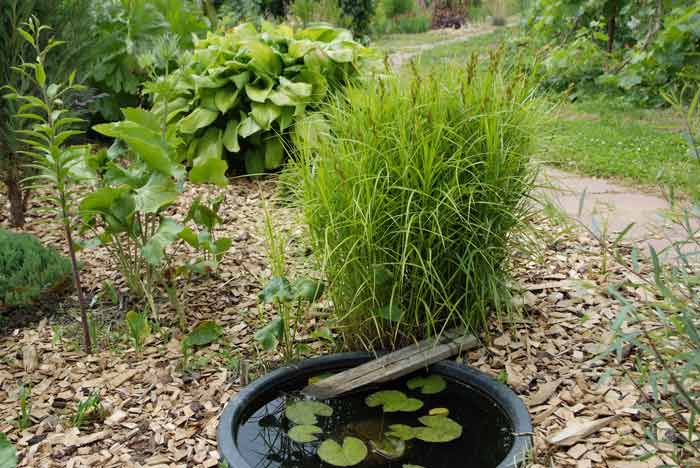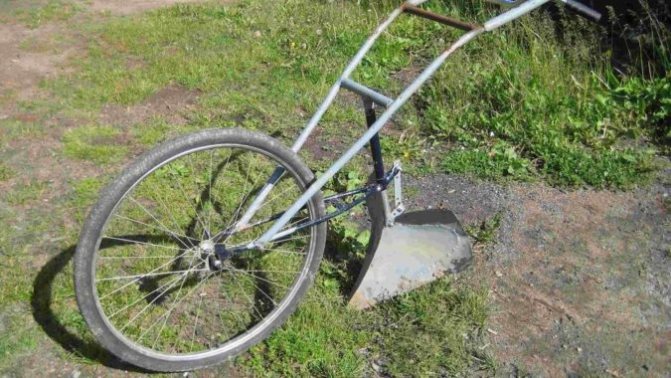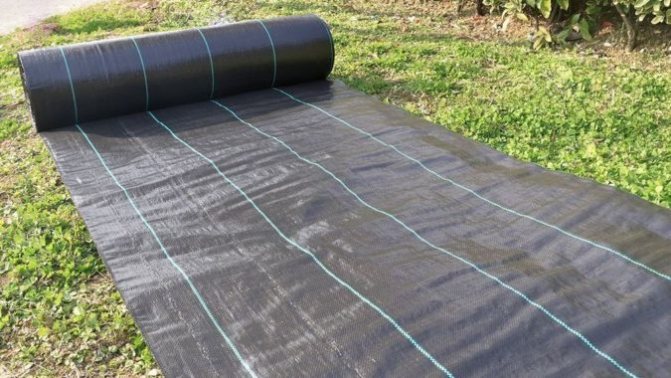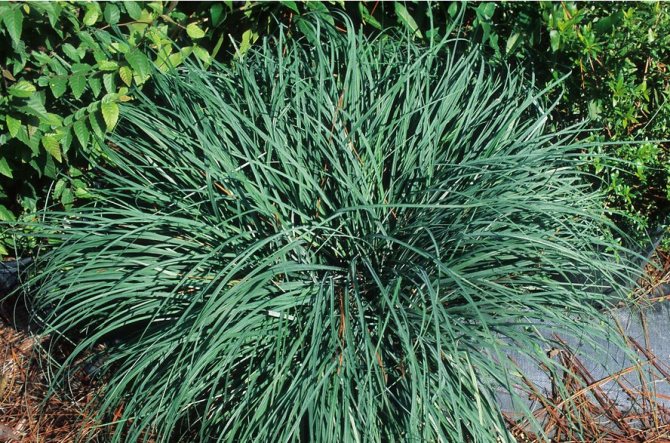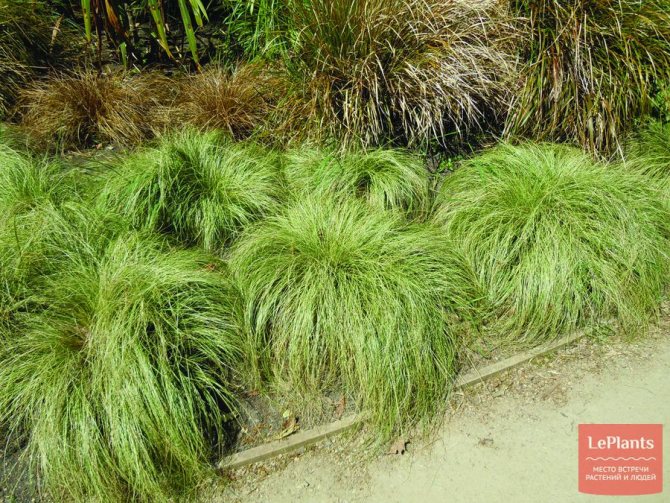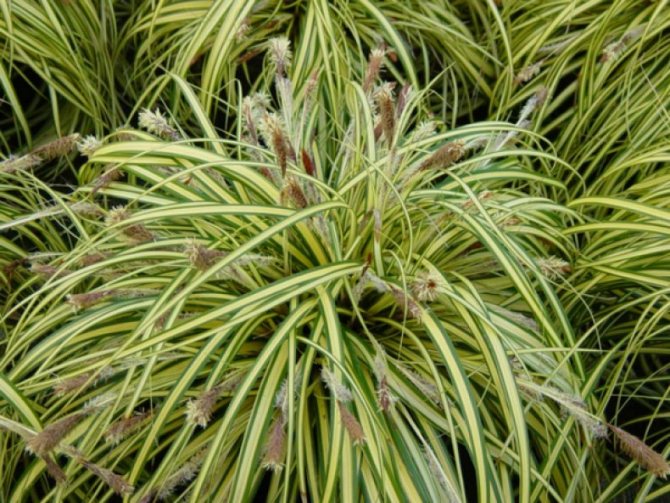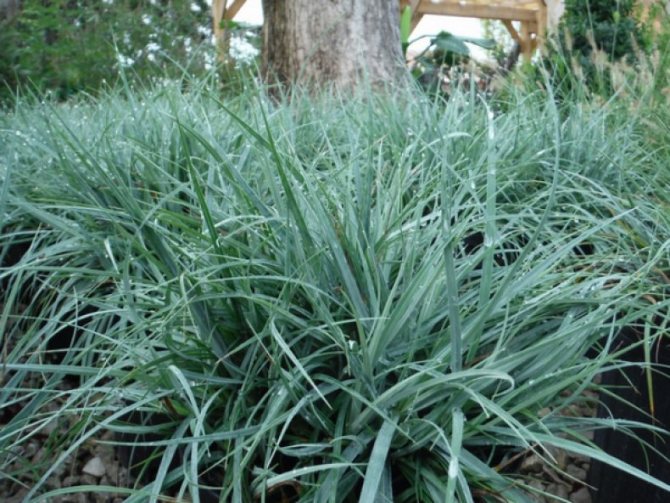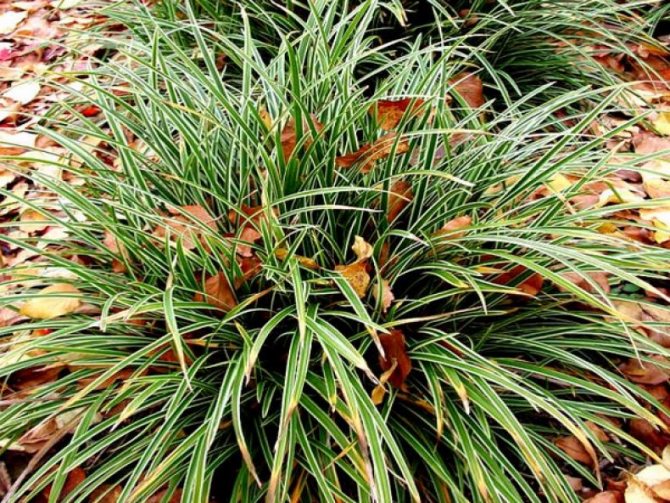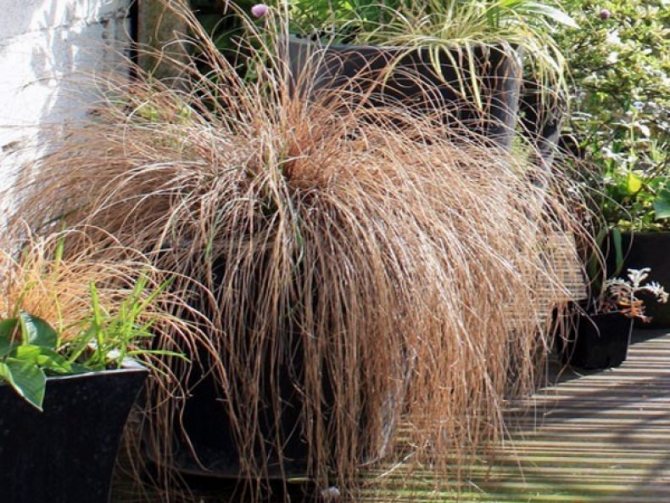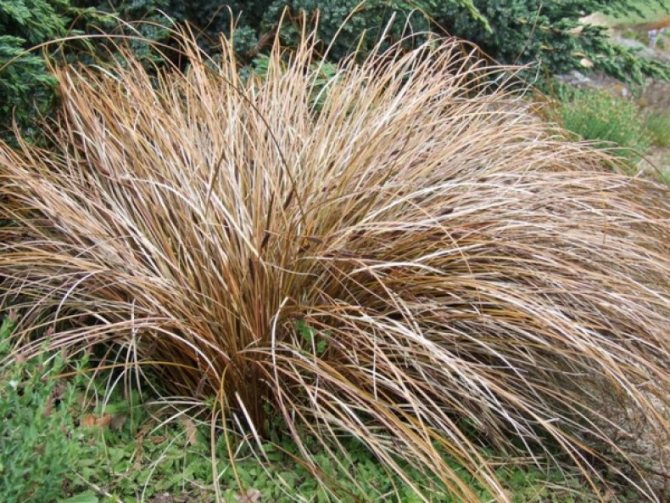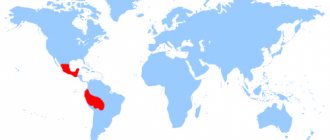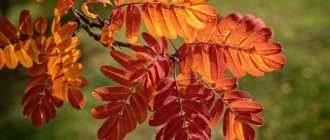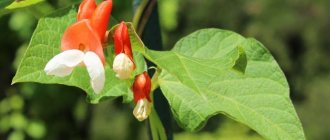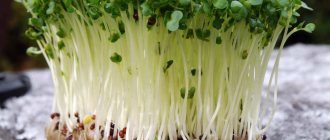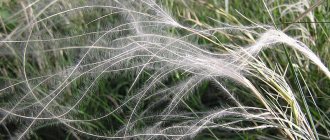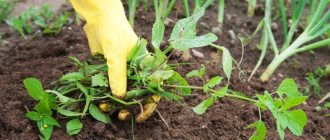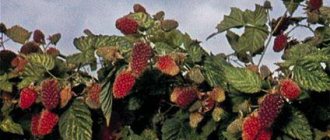Decorative sedge is an irreplaceable herb in the design of the area.
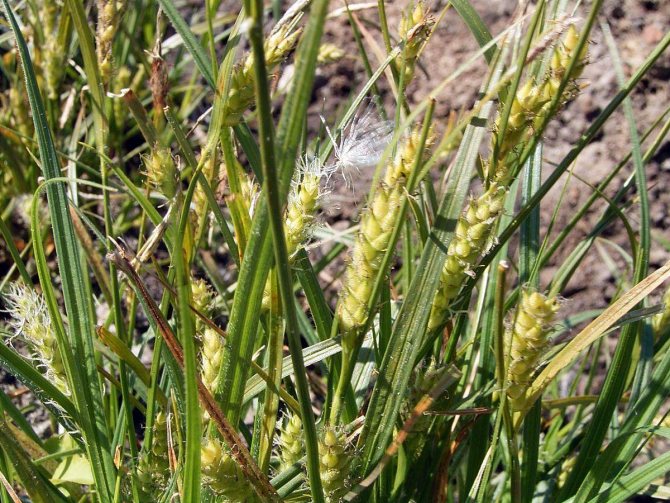
Sedge grows in swamps or along the shores of lakes and rivers. But the plant looks no worse in other spaces that do not belong to water, since besides the "water sedge" - such as aquarium and others, there is also a sedge of the decorative type, called "land": forest, indoor, garden.
Types of perennial ornamental grasses and herbs in landscape design
Ophiopogon flat-shot
(Ophiopogon planiscapus)
Is truly a royal plant. The black-leaved 'Nigrescens' has an exotic appearance. If you place a decorative ball near the bush, this grass will resemble a porcupine with long games.
Pay attention to the photo - in this perennial ornamental herb for the garden, the leaves retain their color even in partial shade:
Ophiopogon blooms in August-September. The spectacle is magnificent - as if a lilac lily of the valley happened to be among the black sedge. It is easy to propagate a plant:
having taken root, "black grass" begins to grow with the help of underground stolons and, accordingly, form new bumps.
Do not forget that ophiopogon comes from regions with a milder climate and can freeze out in severe winters without snow. Mulch and shelter made from bark or fallen leaves will come in handy. You cannot cut the leaves of ophiopogon for the winter. It is an evergreen plant.
Another trendy plant is Miscanthus. New varieties appear every year.
The special variety pleases miscanthus chinese
(M. sinensis)
... This type of ornamental grasses forms powerful multi-stem shrubs from 40 cm to 2 m in height. The leaves are beautifully colored - can be bluish-green, with transverse or longitudinal bright stripes. The flowering of miscanthus is very impressive. But in our climates, elegant fluffy panicles can only be seen in the 'Early Hybrids' variety. Other varieties lack the growing season for full flowering.
Miscanthuses can grow in the sun or in partial shade, they like loose nutritious soils. Occasionally they need to be fed.
Beautiful photographs taken in overseas gardens bring an Asian cereal with an unpronounceable name into vogue. Hakonekhloya large
(Hakonechloa macra)
... Curtains with such decorative grasses and herbs in landscape design, thanks to drooping leaves, look simply amazing. Especially effective are yellow-leaved and variegated varieties.
In the gardens of the middle lane, the hakonehloe, which is called the weeping grass due to drooping leaves in Japan, lacks warmth: lush bumps do not work. In harsh snowless winters, hakonekhloya freezes out. It can only be recommended for cultivation in the southern regions. The plant is planted in shady, humid places.
But reegrass (Arrhenatherum), a tall bulbous subspecies ‘Variegatum’ (A. elatius ssp. Bulbosum ‘Variegatum’), both winters and grows well with us. It forms delicate loose bushes with very bright contrasting foliage. Bulbs are formed in the stalks, which fall on the soil and give life to new plants. This ornamental grass is ideal for landscaping: Reygrass is non-aggressive, indifferent to drought, looks better in the sun, where it gets brighter.
Now, cereals with gray foliage are very popular. The first among them - evergreen sheep
(Elelictotrichon sempervirens)
... Forms charming bluish-blue bushes up to the knee. Loves the sun (in full light it acquires a bright color), light soils and relative dryness.
His "younger sister" - gray fescue
(Festuca glauca)
... Fescue leaves are thin as needles. A neat bump with brightly colored leaves is formed only when planted in a sunny place in dry, well-drained soil. In frosty and damp winters, the plant may die.
Turfy pike
(Deschampsia caespitosa)
- a simple, unpretentious plant. At first glance, nothing special. However, this ornamental grass is very good at design among the stones on the side of the pond. It forms neat, rounded bushes. Recently, varieties with different coloration of spikelets have appeared.
Very popular light blue ‘Variegata’
(Molinia caerulea 'Variegata')
... Its bluish leaves with longitudinal white stripes are brighter in the sun. But in the shade, the lightning grows pretty well and pleases the eye. Loves moisture and coolness. Otherwise, no problem.
As you can see in the photo, these ornamental grasses and grasses for the garden can be planted next to roses, geyher, geraniums, hosts, aquilegia and cuffs:
All these plants will get along well together. It is also a good plant for planting spring bulbs.
Chinese miscanthus winter well. You just need to remember that it is better not to cut them for the winter. In the spring, they wake up late, which makes it seem that the plant is inanimate.
Environmental group
What it is? This is a collection of plants that have similar properties and anatomical and morphological needs from the outside world. So, what are the ecological groups of acute sedge? With respect to the humidity of the environment, organisms are divided into hydrophytes, hygrophytes, mesophytes, xerophytes and cryophytes. Sedge is a representative of the second group from this list. Hygrophytes are plants that are common in areas of high humidity.
With respect to light, plants are divided into heliophytes and sciophytes. But acute sedge is not specifically attributed to any of the groups, since this grass is indifferent to lighting - it feels equally well both in the bright sun and in the shade.
In relation to temperature, wildlife is divided into mega-thermophytes, mesothermophytes, microthermophytes and gekistothermophytes. Acute sedge is a thermophilic plant. It belongs to the mesothermophytes and prefers temperatures around 20 ° C above freezing.
Types and varieties of decorative sedges in landscape design (with photo)
Ornamental sedges (Sageh) are remarkable for their plasticity. They perfectly adapt to different conditions and feel comfortable in almost all gardens:
grow in the sun (just remember about watering) and in the shade, both in dry and damp areas.
There are variegated and yellow-leaved sedges.
Look at the photo - decorative sedges enliven shady corners, create a contrast with plants with dark leaves:
Plants with decorative leaves are considered to be less resistant than the original species. But a bad experience can be comprehended only with the sedge of the Ohimen 'Evergold' (C. ochimensis 'Evergold'), she did not survive the winter of 2002-2003. The rest of the variegated forms, fortunately, are still alive today.
One of the tallest species - drooping sedge
(C. pendula)
... It is a powerful plant, which reaches a height of 1.2 m. The main decoration of sedge is long hanging "earrings" -inflorescences. These sedges in landscape design last for a very long time. The plant is hygrophilous, its very place on the shore of the pond among other large plants - badans, buzulniks, host.
Palm-leaved sedge
(C. muskingumensis)
not so large. Shoots up to a meter in height form a densely knotted bush. An excellent plant for damp places (it can grow even in shallow water). The species has variegated forms and varieties.There is also a dwarf variety - 'Little Mildge'.
Evergreen species - sedge morrow
(C. morrowii)
... She winters great. From under the snow, the plant comes out not even crumpled. The plant forms a neat hummock up to 50 cm in height and slightly larger in diameter. It is better to plant this sedge in partial shade so that the wintering leaves do not burn in the spring in the sun. The soil in the ornamental sedge garden should always be moist, but not wet. There are varigate varieties.
Winged sedge
(S. elata)
has not yet become widespread. The bright yellow ‘Aigea’ will make you draw attention to yourself. The plant forms loose bushes up to 30 cm tall. This sedge species prefers humid places. Winters well. To maintain a bright color, the plant is planted in a bright place.
Mountain sedge
(C. montana)
forms dense squat (up to 35 cm) bumps. The leaves are thin. In early summer, the plant is decorated with black spikelets. From the name it is clear that dampness is contraindicated for this species. But she doesn't like dry either.
As shown in the photo, this type of sedge will decorate the shaded areas of the rock garden:
She is also good at curbs next to other low plants. Looks great in an array. Winters well.
Unlike previous types rusty sedge
(C. siderosticha)
gradually spreads out, forming a curtain. In May, the plant blooms — numerous spikelets with pink anthers appear. Variegated varieties are less aggressive. A very flexible plant that can grow both in the sun and in the shade.
One of the smallest - bird-leg sedge
(C. ornithopoda)
... A bush with a height of only 10 cm, with beautiful long leaves that fit around the bump in curls. The 'Variegata' variety is very nice. The plant is evergreen. The leaves do not suffer from frost, but in the spring they can get burns. This sedge does not tolerate dampness and drought.
Ornamental sedge varieties are perfectly combined with geyher and hostas, they are good "at the feet" of ferns, next to mountain goats, bells, geraniums and cuffs. Low-growing species can be planted in a rock garden.
The palm-leaved sedge has very fragile shoots: as soon as you touch it, the stalks fall. Try not to plant it along paths or in places where the plant can be damaged.
Recently, sedges with brown leaves have appeared on the market. The bushes look luxurious. Holds only brick sedge
(C. testacea)
... But it was grown from seed.
Most sedge species are perennials with a shortened or long rhizome. The genus has many species, differing in appearance and height, as well as in environmental requirements. Among sedges, there are arctic species, mountain species, as well as marsh and lowland species growing on wet meadows, sandstones, and peat bogs.
Reproduction
Basically, sedge is propagated by dividing the bush. Long-rhizome species, after the formation of several shoots, are planted almost at any time. Tussocks are best propagated and transplanted in spring. How to properly transplant Sedge and other ornamental grasses is described in our article: "Secrets of transplanting ornamental grasses in the garden."
It is possible to grow plants of this genus from seeds, sowing them mainly after the spring warming (with the exception of rust-spotted sedge, which is usually sown before winter). Seed propagation of most sedge species is less popular due to the risk of loss of decorative effect.
Types and varieties
Today the assortment of sedges is very large. In different nurseries, catalogs describe over 150 species and varieties.
Most of the sedges are from Europe and the Far East. Sedges from New Zealand are becoming more and more active in horticultural culture.
With such a large assortment, you can choose those that are suitable for any garden. Some sedges form small dense cushions, others - shrubs or emerald carpets.
Sedge flowers are monoecious or dioecious, consist of spikelets, they can be bisexual, female or male.
Sedge is decorative during flowering with its anthers hanging on thin threads.
Bloom
Some sedge species bloom quite beautifully, in addition to decorative leaves painted in unusual colors. An inflorescence is formed on all reproductive shoots. Some species form erect, other drooping flowers. Flowering occurs at different periods, depending on the species and the climatic zone of the content. Ripe seeds can be harvested and sown on seedlings.
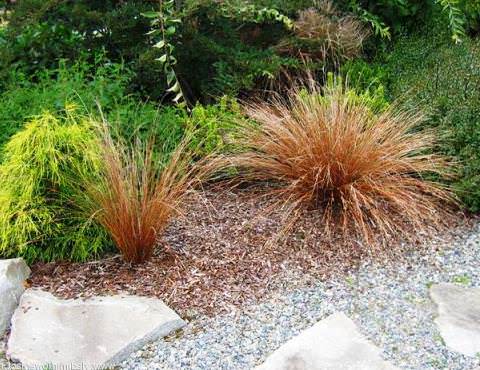

Location
The plant has different attitudes towards light, soil and moisture. Some species like the sun, others like forest dusk. Some require moisture and peat soils, while other types of sedges grow only in dry places. Gray's sedge, sharp, is suitable for damp places.
Sedge drooping, double-stalked, black, shaggy can be used to decorate a reservoir. For rockeries, low European species are suitable, for example, mountain sedge - with narrow green leaves in dense bunches. Black sedge and plantain sedge grow beautifully in the shade.
Photo
You can clearly see the sedge species in the photo below:
The use of sedge
In horticulture, sedge finds various uses - around an ornamental pond or in an artificial swamp, in rockeries, in mixborders, and in a shady garden.
The beauty of sedge lies in the grace and coloring of the leaves, and in some species, interesting inflorescences and fruits - they provide beautiful material for drawing up winter bouquets.


Sedge is simply irreplaceable in compositions: it can emphasize the beauty of other perennial plants - ferns, host, cuffs, stonecrops, geraniums, loosestrife, or vice versa, hide flaws - for example, the lack of foliage in flowering crocus flowers.
But when composing the compositions, it is necessary to take into account one feature - some of the sedges accumulate silicon in their foliage, thus protecting themselves from being eaten by herbivores. Such species do not need to be planted near the path so as not to get scratched.
We must not forget about those sedges that grow behind our fence. When transferring plants to your garden, create conditions close to natural conditions. Sedge hairy, turfy, grayish, elongated can be used on the banks of decorative reservoirs.
Sedge pseudo-rhyme is found in water. In the garden, it can be planted in a pot and placed in a decorative pond.
Sedges finger, shaggy, adjacent, pale, can be planted in dry areas of the garden. In nature, they grow in glades, meadows, forest edges, in sparse forests.
Sedge
Is a perennial with a well-developed root system.
Has more than 2000 subspecies
, which differ in height, decorative appearance and requirements for active growth.
There are mountain, swampy, arctic, low-lying subspecies. Sedge can be found on peatlands, coasts, wet meadows, sandy, marshy and clayey soils.
The homeland is the East and Europe. Some sources call Australia the homeland. It is used as decoration of gardens, greenhouses, greenhouses, summer cottages
... Some subspecies look like dense pads. It is convenient to lie and sunbathe on them. Other subspecies are adorable emerald shelves or small shrubs.
Flowers
plants can be monoecious or dioecious. They grow in the form of small spikelets. Usually
the flowers are bisexual
, have female and male pollination. The anthers of the plant are drooping, graceful. They are located on thin threads.
Plant growth is very fast
... The sedge reaches a height of 45-55 cm.
Growing sedge
In order to avoid unnecessary worries with the plant, create an environment for it that is similar to the native environment of the plant. Steppe types should not be planted in a swamp base, and water types should not be planted in the sun.
Do not plant sedges near gooseberry and currant bushes - they are considered food for fungi from the Anthracoidea family, as well as carriers of rust disease.
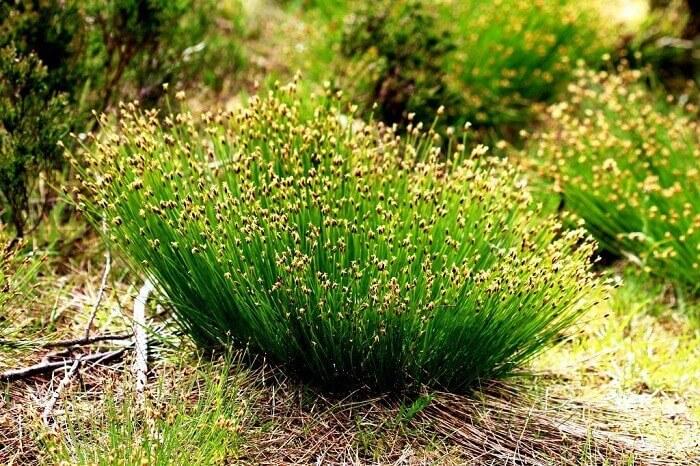

There is no need to unconsciously plant "nice" varieties in the garden - among them there are hostile to each other, not intended for planting next to each other. For example, Sizaya sedge is capable of growing on unfavorable soil. Frost-resistant: grows up to -40C.
With a slow rise, it is considered a wonderful ground cover crop - a neighbor for the feather grass and all kinds of Eremurus plants.
On the other hand, the types Brown of the Form type and Bronze of the Form type are extremely demanding soil - it must be uniformly moist and drained, with an average level of acidity. These varieties require sun or partial shade.
Disembarkation and division
The roots of a plant freshly removed from the ground are cut into small divisions, the amount depends on the power of the plant.
The separation of an already planted species occurs, as a rule, autonomously - or with the support of seeds, which are carried by the wind, insects and birds, or by spreading roots in breadth.
These crops are sown with seeds in the spring or first for seedlings, or with a concrete embedding in the base.
Home care
Crown formation
Pruning sedge
mainly carried out only by professional gardeners who carefully monitor the decoration of the garden. Excess stems are cut off with a sharp knife or scissors.
In most cases, sedge is placed next to plants that have lower bare stems. Thus, a lush bush covers all the defects of the garden.
Watering
Sedge likes constantly moist soil
... Therefore, watering should be frequent and abundant. Swampy subspecies can be immediately kept in deep containers filled with a moistened substrate.
Drying out of the soil leads to long-term plant disease.
The pots are placed in decorative ponds, streams, fountains.
But it is impossible for water to accumulate at the bottom of the pot, otherwise the root system will begin to rot strongly.
Also the flower loves spraying with soft water
from a spray bottle.
The water must not contain chlorine
... It destroys the roots, after which the sedge branches begin to shrink.
Water for irrigation and spraying should be settled, distilled or boiled.
Ornamental species that grow in gardens are allowed to be watered with melt and rainwater.
Top dressing
The plant needs feeding. Usually use organic and mineral fertilizers
... Application occurs along with watering.
Frequency: once every two weeks
... In the autumn and winter period, feeding should be stopped.
Landing
Depending on the subspecies the plant likes dry soils or moist peat soil
... At home, use a classic self-prepared substrate.
This will require sod and leafy soil, peat, humus, fine-grained sea sand. Charcoal is added for greater breathability.
The pots should be spacious and capacious. You should choose a clay or wood material. You should not buy plastic as it releases chemicals. And also metal, as it rusts during watering.
Young sedges are transplanted into spacious containers annually. Adult representatives of the flora should be transplanted once every 2-4 years. When a plant grows in a summer cottage or in a garden in the open field, a transplant is not required.
Reproduction
Reproduction occurs by seeds, creeping rhizome and dividing the bush. Procedure held only in the spring
.
When transplanting, the rhizome of the flower must be carefully examined. After that, it is divided into several equal parts. It is important that there are well-developed roots in each part. Otherwise, the plant will not be able to fully root.
The bushes are placed in pots or planted in the garden for permanent growth. When propagating by a creeping rhizome, well-developed healthy roots are chosen. They are separated from the stem and placed in water. Periodically add water.
Rooting in a moist substrate is also possible. After a while, the first shoots should appear from the creeping roots.
Important!
Most subspecies contain silicon in their foliage.
Thus, the flower is protected from being eaten by wild animals. Therefore, this type of sedge should not be planted next to the road, as it will cause cuts upon contact with the plant.
Growing from seeds
Seed propagation occurs in late winter - early spring. Planting material must be sown in light, breathable soil.
It is best to prepare leafy soil mixed with peat, humus, fine-grained sea sand and any moisture-consuming substrate.
Previously, the seeds should be soaked in boiled water for 12 hours or completely for a day.
Water must be changed and refilled every two hours.
On the surface of the substrate, the seeds are leveled and sprinkled with soil.
Important!
So that the soil is constantly moistened.
The planting is then covered with a homemade mini greenhouse made from a glass jar or plastic bottle. It is important that the glass does not touch the soil
.
Bottom heating must be used. Capacities are installed on heating devices, radiators, fireplaces, stoves. The required temperature in the greenhouse should not fall below 20 ° C. Otherwise, the seeds will not sprout.
The growing time of the planting material is scattered. In some cases, the first shoots appear after 2 weeks, in others - after two months. During growth, the seeds are periodically ventilated to avoid decay.
A constant stable temperature should be maintained. The substrate must be kept moist. After the appearance of the grass, the planting is dived into small containers. After complete rooting, it is transplanted into pots or beds for permanent growth.
Temperature
The optimum temperature in summer can vary from 19 to 25 ° C. In winter, the grass can grow at lower temperatures of 10-16 ° C.
But the room temperature must not be allowed to fall below 8 ° C. Otherwise, the plant may freeze and get sick.
It is important that the room has high air humidity
.
Lighting
Depending on the subspecies, sedge loves the sun or dusk.
... Grass that grows in swamps and shady forests prefers shading. Subspecies growing in sunny glades and in ornamental gardens - can tolerate direct sunlight.
In the summertime, the sedge containers can be put outside. It is important that there is a canopy above it that protects from rain and strong gusts of wind.
... Verandas, gazebos, arches, greenhouses or the porch of a house are perfect.
Decorative views
Few gardeners know that sedge is a herb that has adorned traditional Japanese gardens since ancient times, along with irises, chrysanthemums and hosts. In modern landscape design, many varieties of ornamental sedges are used, differing in their characteristics. Among them there are both sun- and shade-loving, drought-resistant and moisture-loving, miniature and rather massive.
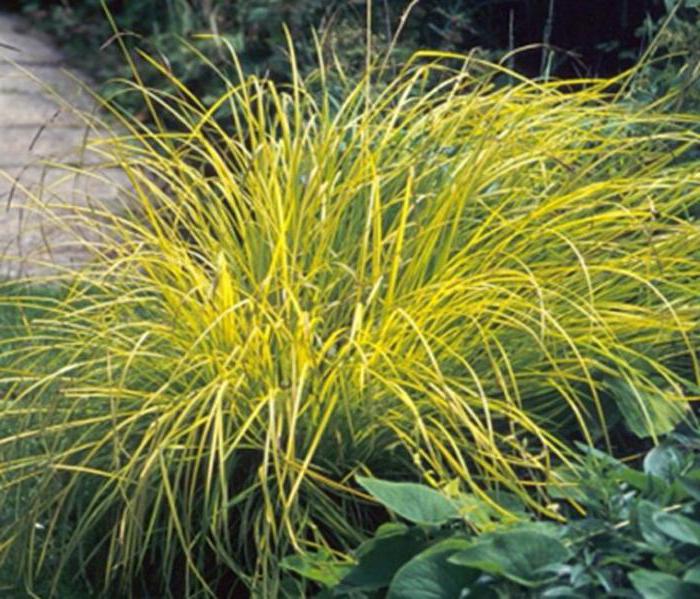

For wet areas, the following types of sedges are suitable:
- false whining;
- Gray;
- sharp.
A small artificial or natural reservoir will be decorated with sedge (grass) planted to a depth of no more than five centimeters, where it grows for many years, without requiring special attention. For this purpose, the following types are suitable:
- double-barbed;
- furry;
- hanging;
- black.
When decorating rockeries and alpine slides, you can use such low European species as sandy sedge, mountain sedge or with white-bordered leaves - strong. The shady corner of the garden will be decorated with plantain or black sedge.
Benefit and harm
Sedge is used as furniture stuffing. In Altai, pillows, blankets and mattresses are stuffed with sedge. In rural areas, hunters and fishermen cover the grass under the soles. It helps not to rub the blisters.
Large specimens have a powerful, dense structure. Thanks to durable fiber, needlewomen weave bags, baskets and mats. Sedge can serve as fixers on mountain slopes.
Dry grass is a fattening feed for cattle. Fish and birds also feed on sedge. The plant is rich in vitamins and minerals. Sedge can be consumed by humans as silage.
Where can you find her?
Representatives of the genus are widespread and are found in most natural zones, but their greatest number lives in the Northern Hemisphere, in regions with a cold and temperate climate.
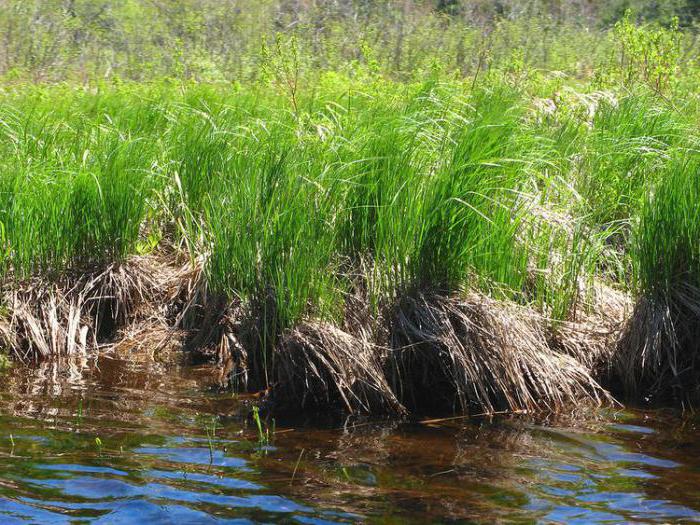

Sedge is a grass that is quite common in the forests of North America; about 20 species of it can be seen here. Several species of sedge can be found in the South Asian tropical lowlands, and one member of this family is found in Africa. The bulk of plants of the sedge family prefers swampy and damp places, but there are also those that have mastered the mountains, steppe expanses, grow well in various types of forests and meadows. Some species have adapted to the aquatic lifestyle.
Diseases and pests
Sedge very rarely affected by pests
... Diseases occur only with improper care. If the leaves are curled, the air around the plant is too dry. It is necessary to increase watering and start spraying the flower.
If yellowness appears, you should stop feeding. In case of rust, the flower is wiped with alcohol and transplanted into a new container.
Sedge is an excellent ornamental plant. Loves frequent watering, spraying, systematic feeding. It can grow in indoor, garden and wild conditions. It is used as a durable fiber for weaving ropes, cables, bags and baskets.
Ornamental sedge varieties
Undersized
Low-growing varieties are used as ground cover plants and for planting in rock gardens, which are capable of forming a solid green carpet.
Conica is an evergreen ornamental sedge with rich green foliage, reaching a height of no more than 15 cm. It develops quite quickly and does not require special care.
Morrowii is a cultivar with a bush height of 20 cm. A beautiful evergreen groundcover forms a dense canopy. Some specimens can reach 35 cm in diameter. This variety has a non-monochromatic leaf color - a white strip along the edge of the leaves gives it a special decorative effect. In single and group plantings, this perennial looks great and can become an excellent decoration for a rock garden and rockery.
Hybrida The Beatles is one of the most beautiful hybrid varieties of garden sedge, which forms a hummock of narrow leaves, the length of which can be no more than 15 cm, while the diameter reaches 40 cm.Since this plant is evergreen, it perfectly retains leaf quality after winter ... This property makes it possible to use it in group plantings with garden primroses.
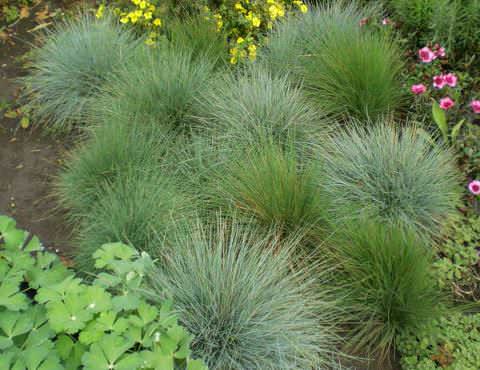

The unpretentious and drought-resistant forms include the Flacca variety, which is characterized by a bluish color of foliage. Small plants, no more than 15 cm in height, are capable of developing on any, even meager soil. It is widely used as a ground cover plant, but it is characterized by aggressive growth and intensive spread over large areas.
Firma Variegata is also extremely unpretentious and can grow in any light - from scorching sunlight to partial shade and shade. Its height barely reaches 10 cm. Dense cushion bumps are ideal for growing in rockeries and in shady areas of the garden. The color of the leaves can vary depending on the conditions of detention, but in bright light it is most often whitish-yellow.
Useful video
Watch below a helpful video about the Sedge plant:
Sedge is a perennial moisture-loving plant that grows along river banks, in swamps, in flooded meadows and in shallow waters. This plant is widespread throughout the world, and today there are about a thousand species of sedges. Sedge grass is an excellent natural purifier of reservoirs; many water birds nest in its thickets and small aquatic animals find food.
Sedge in nature is an erect plant up to one meter high with a thick creeping rhizome, a triangular stem and tough leaves with a sharp edge that cover the stem like a tube.
Sedge is a well-known and popular ornamental plant for a long time. The charming visitor from the swampy lowlands and coastal shoals has become firmly established in ornamental gardening in recent decades. Decorative sedge has long been cultivated in Japan and used to create elegant and laconic traditional gardens at palaces and temples. About 160 species of sedges are known in horticultural culture today; they are actively used by landscape designers and amateur gardeners. Sedge compositions are constant participants in the most prestigious international flower and landscape design exhibitions. Stems and leaves of sedge are also in demand by florists for creating compositions from cut plants.
Success secrets
For sedge, moderately cold content (+ 15–18 ° С) is optimal, during the rest period it is necessary to provide it with a temperature of + 5–7 ° С. Like other cold-flowering ornamental grasses, sedge "awakens" at 0 ° C and reaches its highest point of growth at a temperature of + 15-24 ° C (if the humidity is sufficient). This must be taken into account when storing rooted cuttings.
Sedge needs a lot of fresh air. In the warm season, it is good to "ventilate" a houseplant on a balcony or terrace. But in no case should sedge be left in a draft!


ON THE PICTURE: Air bath for young plants 'Phoenix Green' sedges.
Regular removal of dry leaves and inflorescences will preserve not only the attractive appearance of the curtains, but also the health of the home sedge.
Views
There are many types of ornamental sedge: mountain, arctic, lowland, marsh. For the garden, designers choose both low-growing and tall sedge varieties, combining them with primroses and autumn chrysanthemums or roses. They also differ in the color of the leaves: green with white and yellow stripes and edging, yellow with red blotches, almost blue, blue-green, gray-blue, golden. There are types of sedges with leaves hanging down to the bottom, there are spherical, with an unusual shape, bright inflorescences.
In ornamental horticulture, sedge is used to create a "garden on the water", to decorate the coastal zone of streams and ponds, to create curbs in shady areas of the garden or to create rockeries, as well as to place the necessary accents in a shady wet area of the garden. Sedge planted in tubs is used to decorate winter gardens and verandas.
This herb is a great companion for brighter and more expressive plants in the garden. Sedge goes well with geyher or hosts on the same site. In spring it can become a worthy setting for tulips, daffodils and other bulbs, and in autumn for late flowering plants.
For example, in the Morrow sedge, Ice dance
and
Variegata are bright, deep green striped leaves. By planting these varieties, you can successfully place the necessary accents in the garden or plant greenery on a large area.
New Zealand Terracotta Sedge has especially bright leaves that become even brighter in bright light and are quite capable of playing independently in the garden. Popular with florists, New Zealand sedge species have expressive leaves in red-brown tones and may well play a solo part in the garden.
Blue Zinger sedge stands out for its tough blue-blue leaves, which is why it is also called blue sedge or blue sedge. She loves well-lit areas or partial shade and works great when creating a rock garden or combined with pebbles.
The low-growing sedge variety Hybrida The Beatles looks interesting, which, when growing, forms a low evergreen hummock with a diameter of about half a meter. This sedge is in perfect harmony with garden primroses.
To decorate artificial waterfalls, Buchananii sedge is used, which stands out for its coppery leaves and harmonizes well with greenery and water, and is also planted as a background for flowering ornamental plants.
Spikes of a plant
Sedge blooms in a peculiar way - decorative shoots bloom on it. These are inflorescences that have long, cylindrical spikelets. They usually hang on long legs. Inflorescences are a separate part of the plant that performs the function of pollination. Often it is modified and therefore looks more attractive than the stem and leaves.
Acute sedge has 1 to 4 staminate and 2 to 5 pistillate ears in its inflorescence. The latter can reach 7 centimeters in length. Sedge spikelets are sessile; their scales, which completely cover the surface of the appendix, are brown or dark brown in color. They are protected from the outside world by special covering leaves. In length, they are approximately equal to the inflorescence or even exceed it in size.
Botanical features
Numerous ornamental garden varieties and sity round (a weed that is difficult to remove from gardens and lawns) - all these herbaceous plants belong to the genus Cyperus - Sytevye, part of the Cyperaceae - Sedge family. Modern scientists attribute more than 500 plant species to the Cyperus genus. Almost all sedge is a perennial herb, but there are also species of it that not only grow leaves in the first year, but bloom and even bear fruit. This herb has a creeping horizontal rhizome. The exception is the Elata sedge, whose rhizome develops vertically to keep the plant and develop in the sand dunes.
Differences from other plants
Sedge is divided into two groups:
- Sprawling.
- Tussock-forming.
Plants of the first group have long rhizomes, from which rosettes extend. Taking root, the rosettes form curtains. These include black sedge, sharp sedge, water sedge, etc.
Tussock-forming sedges look like dense hummocks. They have short rhizomes without rosettes. These include drooping, millet, tall, etc.
Many people confuse sedge with other plants, such as cereals. It is especially difficult to distinguish them in the photo. But sedge has many features that are unusual for cereals, first of all they differ in the stem. Stem of sedge:
- filled;
- does not have nodal thickenings;
- triangular in cross section.
The height of the stem depends on the species and variety: there are plants more than a meter tall, for example, sedge is high, there are very low ones - up to 30 cm, like Bohemian sedge.
The leaves of the plant are long, hard, flat, alternate, lanceolate or linear, up to 30 cm long and 2–15 mm wide, of various colors - many tones of green, bluish-gray, brown and others, with or without a border. The shape of the leaves in different species may differ - they can be erect, they can bend into an arc and even curl with curls. The leaves are very sharp - it is easy to cut them, stop them - that's why the plant got this name.
Despite the fact that as an ornamental plant, this herb is planted mainly because of the leaves and shape of the bush, its flowers are also not without a certain appeal. These are dioecious or monoecious spikelets of various colors - from light green shades to dark olive, brown and even black. In shape, they can resemble a narrow cylinder or bump, in some species they look, in others they droop.
Features of planting and care
Regardless of what sort of sedge, almost all plants are very unpretentious and can grow on any soil. However, you need to know the basic requirements.
Site selection and lighting
- Choose a site for planting depending on the variety of ornamental sedge. So, swampy will grow well on soil where there is peat, sand and humidity will be high enough.
- Other species and varieties will be taken on drier soil, which, on the contrary, will have to be moistened more.
- Apply organic fertilizers and peat during the fall months. Plants then adapt better.
- Try to position the sedge so that it is not too close to other plants. The root system of almost all species grows rather quickly and can behave aggressively, capturing new territories.
- Many varieties love the sun, and some grow well in the shade. If you do not know which place will be the most comfortable for a certain sedge variety, then plant it in partial shade.
- Spacious places with winds like the Arctic sedge. Other species prefer quieter areas.
Landing
- When the ground warms up, you can start planting. Make ridges up to 3 cm deep. If you are planting a sedge bush, then the hole must be deeper for the root to fit.
- Place a very thin layer of river sand or peat at the bottom of the ridge. Then lay the seeds in at intervals of 25 - 30 cm.
- Cover with soil on top, tamp a little and moisten the soil. Planting is best done in the second half of April and until the second decade of May. At this time, residual night frosts finally go away.
Watering
You need to moisten the soil constantly and often. Ornamental sedge especially needs moisture on dry and hot days. Can be watered 2-3 times a week. One bush usually takes at least a bucket of water.
If you skip watering, then changes in the appearance of the aboveground part will be visible immediately. Leaves droop and begin to take on a yellow tint. In addition, the root system is weakening.
If your plants are planted in special pots or tubs, then in a dry summer, you can determine the container in a container with water. Provided there are drainage holes at the bottom.
It is very important that the water is settled. Use filtered, thawed, or boiled. It is strongly not recommended to water the bushes with tap water, which contains a lot of lime, chlorine and heavy metals. You can destroy the roots.
Fertilizer
- Every 14 to 20 days it is necessary to feed with minerals, bird droppings or manure-based solution. It is necessary to ensure that there is a complex of useful substances.
- Many bring Nitroammofosku. But the dosage is selected individually, depending on the composition of the soil.
- With the arrival of autumn, feeding stops.
Basic description
Recently, varieties and species, of which there are from 1500 to 2000, decorative sedges are increasingly used by landscape designers to create decorativeness in different parts of the garden: we can see a plant near artificial reservoirs, in group plantings stylized as a meadow, in places, where why - then nothing wants to grow or as a lining under the trees.
Botanical Description of Ornamental Sedge
- These perennial herbs belong to the Sedge family and grow in many countries of our planet. Basically, a temperate climate is considered a comfortable climate for sedge. So, in Russia there are at least 400 different varieties that help bring comfort to garden plots.
- The name of the herb in different languages has the same meaning, literally "saw", "cut", "cut" and other meanings. Most likely, this is the name of the plant because of the narrow and sharp leaves arranged in three rows.
- The rhizome of a plant is of several types: long or short. The main characteristic of the root system is fibrous, almost all species have adventitious roots.
- Flowering is represented by dioecious or monoecious flowers, which are collected in spikelets. They have a drooping structure and hang from long and very thin stems.
- Different types of sedge look completely different: they can form "pillows", carpets or small shrubs. The description also differs depending on the variety.
Seat selection
When choosing a site for planting, you need to remember about the features of a particular variety. Swamp sedges will only grow on moist soils with the presence of peat or sand. Other lines will also be accepted on drier soil (of course, it will have to be moistened regularly).
It's not bad if the soil has been fed with peat or organic matter since the fall - this will make it easier for the plant to get used to it.
There are also lighting requirements. Not everyone succeeds in providing the ideal light regime, but it's okay - it's kind of the compromise will be light partial shade.
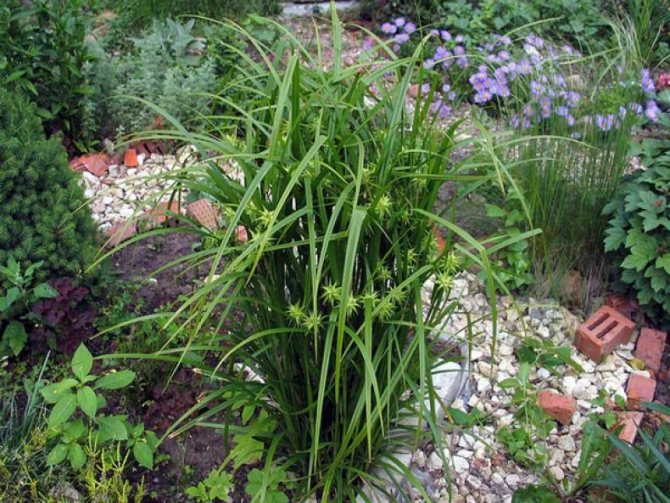

It's the same story with the wind. Arctic species are good at tolerating strong and prolonged winds, while others need a quieter place in this regard.
When planning a planting, take into account the moment that sedge has roots grow very quickly, which literally in a season can reach the rhizomes of other plants. Therefore, they try to keep them at a distance.


General description, photo
Sedge is a representative of an extensive family of the same name with characteristic narrow petiolate leaves, characterized by increased rigidity, due to which they retain their shape and direction even with a very impressive length. In the leaves of most sedge varieties, parallel venation is observed. Their color can be either monochromatic or have light longitudinal stripes or a single edging leaf. Structurally, sheet plates can be smooth-flat or have a pronounced central groove. In appearance, the family could well be attributed to cereals, if not for the presence of a faceted stem.
Sedge also produces spikelet fruit with scaly fruits that are visually similar to wheat grains, but much smaller in size. Due to this smallness and lightness, they are easily carried by the wind. However, the main way of reproduction is not seed, but rhizomatous, since sedge forms a very developed root system, especially for aquatic (marsh) species. This is due to the increased looseness of the swampy soil compared to ordinary dry soil, due to which the sedge roots grow in breadth very quickly and without hindrance, giving extensive root growth.
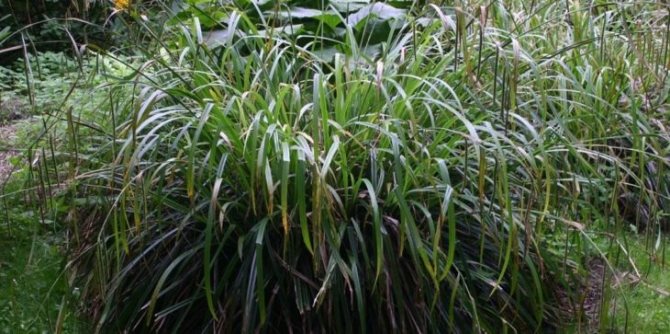

Sedge breeding
A simple way of reproduction of any kind is to divide the rhizome. Do not separate too small parts, as they may not survive or will take a long time to develop. To achieve the best result, you need to dig out a part of the rhizome with several stems. It is recommended to divide the bush in the spring during the period of active growth.
Seed propagation is also possible, but this process is laborious and time consuming. You can sow seeds for seedlings, both in open ground before winter, and in early spring at home. Young plants in the first year of life will form a poor bush, but in the second year they will be more decorative and dense.
Possible difficulties
Normalized watering and a sufficiently high air temperature can become optimal care for sedge. But if the plant is in a stage of active growth, it can become quite demanding for a while. It would seem, how can a sedge, so picky about the outside world, suffer? During the period of active growth, the plant increases its sensitivity to abiotic factors. At this time, sedge can "catch" various non-infectious diseases.
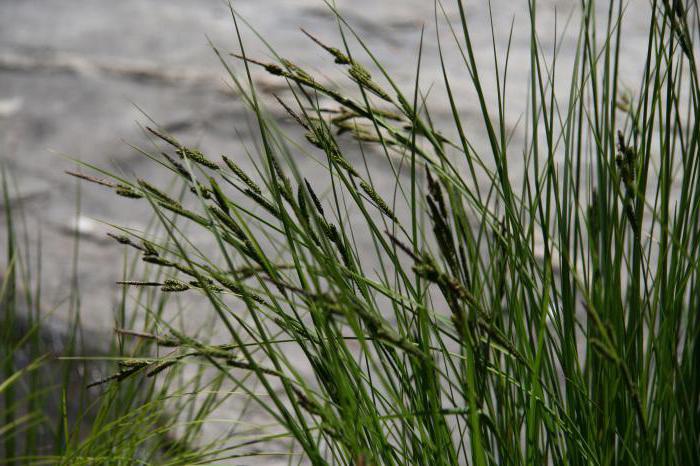

These are such damage to sedges, which appear due to regular mistakes in care and inattention to external factors, such as improper lighting, humidity, temperature, watering, plant location.Sometimes it can even be affected by the quality of the container or substrate. To prevent all these difficulties in sedge development, it is recommended that you familiarize yourself with all possible difficulties in advance.
Dry or waterlogged soil? And in fact, and in another case, the plant wilts, its leaves wither. If you continue with the wrong care, it will simply die. Therefore, it is important to monitor the normal moisture content of the soil. If the leaves of a plant turn yellow, it means that there is a lot of water for it, and if they turn black, on the contrary, too little.
Optimal watering for sedge is such that the soil is slightly wetter than other plants, since the grass is very sensitive to dry soil. And if you grow it in a home flower pot, then in no case also do not allow the soil to be swampy.
Low air temperature? As mentioned above, sedge is a thermophilic plant, so keeping it in places with low temperatures is a big mistake. And if the plant is warm and comfortable during the day, then such sudden changes will adversely affect its health. It is necessary to ensure that the grass is always in sufficiently heated areas. If you are growing sedge in a home pot, move it away from windows at night.
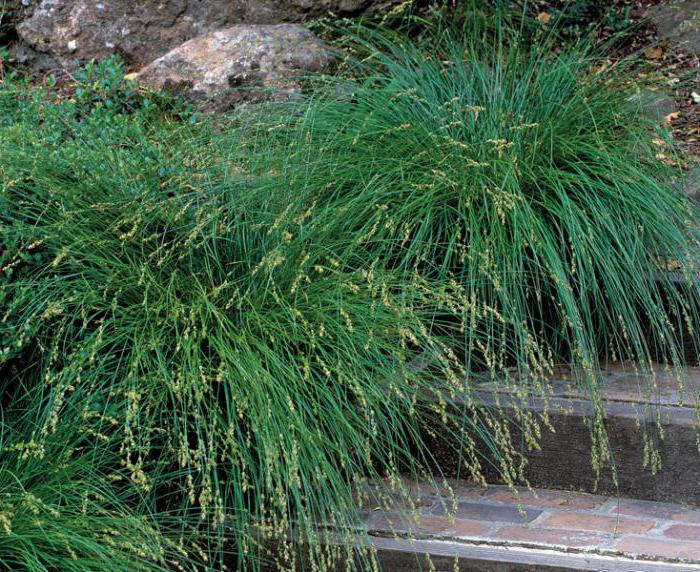

Interesting notes about the sedge plant
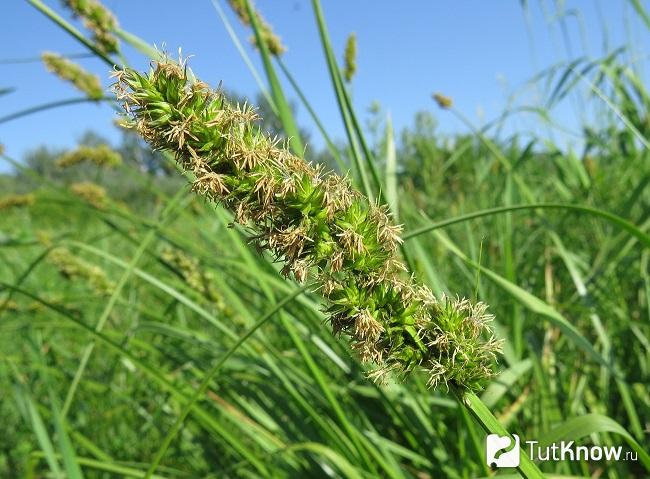

This plant has long been known to folk healers, as it contains a large amount of useful substances. However, official medicine has not yet conducted any research in this area.
It is noticed that the largest ascorbic acid and yellowish-orange pigment (carotene) is present in the varieties of tyrsa that grow in mountainous areas, where the absolute altitude above sea level exceeds 3000 m.The following useful components have also been identified in them and in other species:
- coumarin, which promotes vasodilation, elimination of tumors and has antispasmodic properties;
- saponins, characterized by diuretic, diaphoretic, as well as choleretic and expectorant effects, and also lower blood pressure;
- bitter glycosides, which help to remove gastric juice from the intestines and contribute to an increase in appetite, since the peristalsis of the stomach will begin to work more accelerated, and therefore food can be absorbed faster by the body;
- tannins, which can help stop bleeding, reduce inflammation, and are astringent and bactericidal.
It can also be noted the presence of starch (giving energy), resins (promoting wound healing), gums (for good work of the gastrointestinal tract), mineral salts (to improve metabolism in the body), essential oil.
Since sedge contains a large amount of useful substances, such properties as bactericidal, antispasmodic, expectorant and anti-inflammatory are distinguished, there is the possibility of anesthesia and emollient action. The plant is used for general strengthening of the body, excretion of bile from the body, there is also a diuretic and diaphoretic effect. Tyrsa herb is recommended for constipation, flatulence and normalization of bowel function.
The plant is characterized by the ability to normalize metabolic processes, purifies the blood, removes bad cholesterol and harmful components from the body. If the patient suffered from colds such as bronchitis or pneumonia, or he was tormented by a disorder of the digestive system, then, for example, in Germany, healers prepared decoctions from sedge and treated these diseases.
It is interesting that until antibiotics were invented, the zemstvo doctors carried out the treatment of syphilis with the help of sedge. Due to the fact that coumarin is present in the foliage, skin diseases such as dermatitis, psoriasis and eczema pass under its influence, it is possible to treat lichen and lupus erythematosus
When using rhizomes, you can prepare a decoction or teas and use such a drug for gout and inflammatory processes of the joints. Sedge oil, which comes to us from Egypt or Morocco, is usually added to creams and depilation products.
Contraindications for the use of funds based on parts of sedge are children's age (up to 14 years old), the period of pregnancy, breastfeeding. It happens that such drugs contribute to the occurrence of allergic reactions; they should not be used for diarrhea, kidney and bladder diseases.
Pest and disease control methods for sedge cultivation
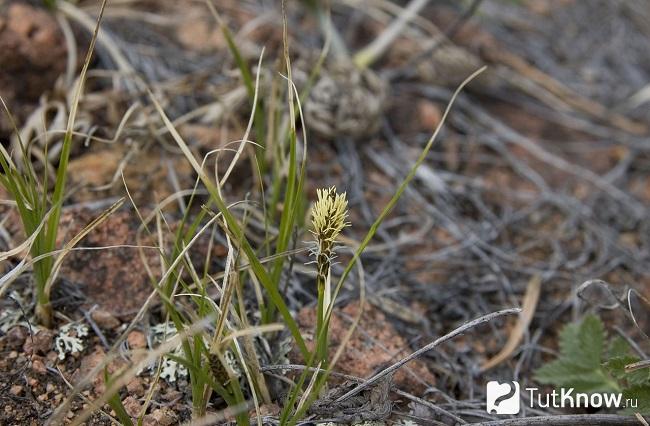

Often, such cereal plants are affected by gray mold and powdery mildew (also called linen or ash). Both of these diseases are of fungal origin, they are provoked by high humidity coupled with cold temperatures, but their symptoms are different:
- Gray rot
characterized by a grayish bloom, which is somewhat reminiscent of fluffy dust, then light gray mold appears on the foliage, after the leaf tissue softens and dies off. - Powdery mildew
promotes the covering of the foliage with a whitish bloom, reminiscent of a lime solution, over time the leaves turn yellow and deteriorate.
To fight these diseases, all parts that have been affected must be removed, and then the sedge bush must be sprayed with fungicidal preparations, for example, Topaz, Sulfaride or Fungicide. For the prevention of these diseases, the plantings of this cereal are also treated with Ferazim, Kopfugo or Desoral Euro.
Aphids, spider mites, scale insects and mealybugs are isolated from pests. The presence of harmful insects is evidenced by the suspension of sedge growth, yellowing of foliage, the formation of a thin cobweb and sticky plaque on leaf plates. It is recommended to immediately carry out the treatment with insecticides, among which Aktara, Karbofos and Akterik are distinguished.
There are also the following troubles when growing sedge:
- foliage acquired a red or brown color scheme, began to dry out, which indicates a lack of moisture, nutrients (complex dressings);
- the color of the leaf plates has turned pale, which indicates a lack of lighting;
- the loss of a curtain's decorative appearance is due to the fact that pruning is not carried out in a timely manner or the bush has grown too much;
- decay of roots, stems and foliage provoked a waterlogged substrate or an excess of moisture.
Plant classification
Sedge is a herb whose beneficial properties are used in folk medicine and homeopathy. Rhizomes are especially valuable in this respect. They remove inflammation, relieve pain and kill disease-causing microbes.
In total, two broad categories of plants can be distinguished. The first is the hummocking species. Their root system is short. Sedge is a plant that forms clear, dense bumps. Sedge species are distinguished:
- high;
- fox;
- soddy;
- hanging;
- sieve;
- millet.
Sedge is a plant capable of reaching a meter in height. His ears stick out in different directions and have an impressive length. The species is subdivided into two subspecies with yellow leaves bordered by green stripes and characterized by small stature.
Sod grass, which is easy to cut, forms tall, oval mounds. The leaves are narrow and dark green. Inflorescences are small, low, barely visible. The foliage is light green, stands out with contiguous spikelets, where male and female buds are mixed with each other. The flowers are large.
The hanging variety is capable of reaching a meter in height. The leaves are pure green and wide. The culture forms ears of a brown tint. The filamentous plant has spikelets that hang somewhat to the ground, greenish with a yellow tint, rather large. They are collected in a bunch.
The millet variety has a blue tint, small growth, not exceeding 40 cm, and an elegant shape.It is decorated with small decorative spikelets, which sit on small peduncles.
The second variety of sedge - sprawling species.
Care features
Keeping sedge in the country or in the garden comes down to all the usual work. But for all their simplicity, they are associated with some nuances that are worth recalling.


Watering
Main condition - abundant and frequent watering. It is undesirable for the soil to dry out and be taken with a crust and cracks. In the summer months, perennials are moistened 2-3 times a week. One bush can take a 10-liter bucket of water.
If you skip a couple of planned waterings, the result will be visible immediately - the leaves instantly turn yellow at the edges, and growth is inhibited. In addition to this, the roots begin to weaken.
With specimens growing in containers, the matter is somewhat simplified - the tub is often placed directly in the water, making sure that the roots are not waterlogged.


A separate topic - water quality... Sedge is extremely sensitive to it: too hard, chloride or technical liquid (which is often served in summer cottages) can destroy the root. In such a situation, it is better to use settled water. In a week, the harmful compounds will settle at the bottom of the barrel, and the water can be used.
Top dressing
It is carried out every 2-3 weeks, simultaneously with watering.
Usually organic compounds such as bird droppings or rotted manure are added. The use of "mineral water" also gives a good effect.


But such means should be complex - for example, the predominance towards nitrogen will affect only the green mass, while the rhizome will remain without the "additive".
The best choice would be Nitroammofoska or balanced Ammophos. The application rates are indicated on the packaging, but it will not hurt to consult with the seller either - for different types of soil, a "different" dosage is prescribed, which is better to clarify.
The peak of application is in the spring and summer. From the beginning of autumn, fertilizers are not applied.


Pruning
Withered leaves harvested in spring (for evergreen species this is mandatory).
Bushes can be shaped by removing too bulging stems with sharp scissors or a knife. Such work requires a certain skill - the movements should be sharp, without causing multiple cuts.
Wintering
Most of the varieties we grow has an enviable winter hardiness - often they are not even covered.
More "capricious" against this background, varieties like Buchananii Viridis - they must be wrapped up in anticipation of cold weather (or even transferred to a greenhouse where the temperature does not drop below + 8 ° C). This is typical for all exotics imported from warm countries.
We found out what is remarkable about sedge, found out what kind of plant it is, what is its cultivation connected with. We hope she becomes worthy decoration your site. New colors every day!
I like to decorate my backyard with plants in a natural way. I have already planted many different grasses and flowers, but undersized varieties of decorative sedge are especially popular. This is a fairly well-known plant in central Russia. If you plant it correctly, do a group planting, then you can really create a very cozy corner of the garden. Today we'll talk about what kind of ornamental sedge plant is and how to grow it correctly.


Landing
Garden species of decorative sedge feel great in the rays of sunlight, but in partial shade they will look no less decorative. For planting, it is better to choose soil that includes sand or peat. It should be borne in mind that the root system of sedge develops rapidly, adventitious roots are able to spread over a sufficiently long distance during the season, forming many shoots. It is for this reason that one should limit the area on which a herbaceous perennial will grow or regularly remove excess rhizomes and shoots.
To maintain the most attractive appearance in the summer, do not forget about frequent watering.With a lack of moisture, the tips of the grass will dry out, and the bush itself will be less dense. Varieties that do not have a monochromatic leaf color may lose their decorative qualities in drought. It is best to feed the decorative sedge with organic fertilizers. Natural ingredients stimulate bush density and growth.
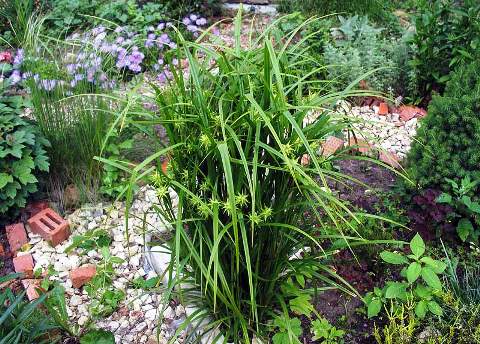

In the fall, all shoots and leaves die off. Only the rhizome hibernates, which does not require shelter. In the spring, last year's dry remains of the plant must be cut off. This must be done before young shoots begin to grow.
Habitat
Sedge belongs to the genus of herbaceous annuals and perennials of the Osokov family. More than 2 thousand varieties of this plant can be found almost in every corner of the world with a temperate climate. The largest number of species grows in the northern hemisphere, quite a lot of varieties can be found in the forests of North America, on the territory of Russia there are at least 400 species of this plant.
There are sedges living in the tropics of South Asia, and there is also a species - an inhabitant of Africa. Most members of this family love moisture, so they can often be found near water bodies and in damp and wetlands. Some species grow directly in water. But there are also sedges that live in the mountains, steppes, forests and meadows.
Planting and breeding
Planting sedge in open ground is very simple - anyone can handle it. The work progress will be as follows:
- Small grooves are made in the heated soil. Their depth may differ depending on the size of the planting material - 3 cm is enough for achenes, and for seedlings they are taken deeper, with a margin for the growth of rhizomes.
- Having slightly moistened the holes, you can fill them with a thin (0.7-1 cm) layer of sand or peat.
- After that, the seedlings or seeds are placed in the groove and sprinkled with earth, not forgetting to tamp and moisten it tightly.
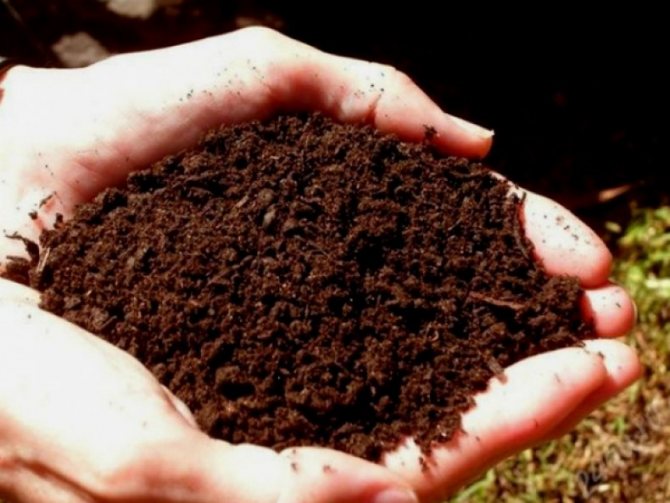

The planting scheme provides for an interval between young seedlings of 25-30 cm. For older specimens, this gap is increased.
This procedure is carried out in late April or early May, when there is no risk of repeated frosts.
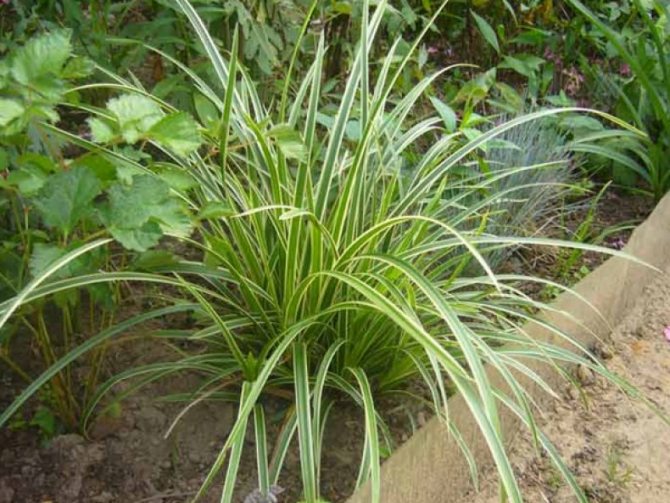

Some also practice pre-planting, which implies seed propagation. It's more complicated here:
- At the end of February or early March, a spacious pot is taken. It is filled with a mixture of leafy and soddy soil, humus, peat and fine river sand (all this is added in equal proportions). In order for such a substrate to "breathe", a little coal is also added.
- At the same time, achenes are placed in boiled water for 12 hours (marsh varieties will take a day). The water in these "baths" is changed every 2 hours.
- After these manipulations, the seeds are spread on the soil and sprinkled with a thin (0.5-0.7 cm) layer.
- The pot itself is immediately covered with glass or foil. They should not touch the ground. It is placed on a battery or boiler - bottom heating and constant + 22 ° C are required.
- The substrate is kept moist, until the emergence of shoots, a spray bottle is used for such purposes - "direct" pouring is still prohibited.
- Periodically, the seeds are ventilated by removing the film for 1-2 hours. This will keep them from rotting.
- The sprouts can "fight back" in a month or two. The grass that has gone into growth must be dived, placing it in another container. By the beginning of May, the roots will get stronger, and the transplantation to the site will be successful.
What does sedge grass look like?
If you don't look closely, it is quite easy to confuse sedge with cereal plants. But, looking closely, you notice that, in contrast to cereals, the sedge has a full, not hollow stem, and does not have nodal thickenings, and in cross section it is triangular with rounded or sharp edges. Sedge grass has long, alternate leaves, firm and flat.


The leaf blade in most species is lanceolate or linear, with parallel venation. Different types of sedge bloom with dioecious or monoecious dioecious spikelets.The faded plant forms a single-seeded fruit - a fluffy achene of a triangular or curved-flat shape.
[collapse]
Wintering
Most varieties of ornamental sedge are winter-hardy and, with sufficient snow cover, do not need a special shelter in winter. If you are not sure that the winter will be snowy and not extremely cold, you can hedge yourself and cover the sedge with spruce branches, straw or other mulch or covering material. However, it should be borne in mind that last year's foliage or straw often become a refuge for the wintering of insect pests.
Ornamental sedge varieties brought from warm regions, in particular, "Buchananii Viridis", need a very high-quality shelter or transfer to a greenhouse for the winter, in which an all-season temperature of at least + 7C must be maintained.
Sharp sedge: description
In appearance, this plant is quite similar to cereals. Its stem has a cross-section in the form of triangles, and leaves are attached to the bottom. As a rule, they grow flat in shape and reach 2 to 6 mm in width, and are equal in length to the main part of the plant. In most sedges, the leaves are bright green, sometimes grayish.
By the way, if you carelessly run your fingers over the plant, you can cut yourself deeply enough. This is because there are silicified thorns on the foliage of the grass, although they are not visible due to their tiny size. But they are easy to feel - plants of the sedge family have a noticeably rough surface. Their total height reaches from 50 to 150 cm. The habitat of acute sedge is sandy, as well as silty shores of reservoirs. It is widespread in Central Asia and Europe.


